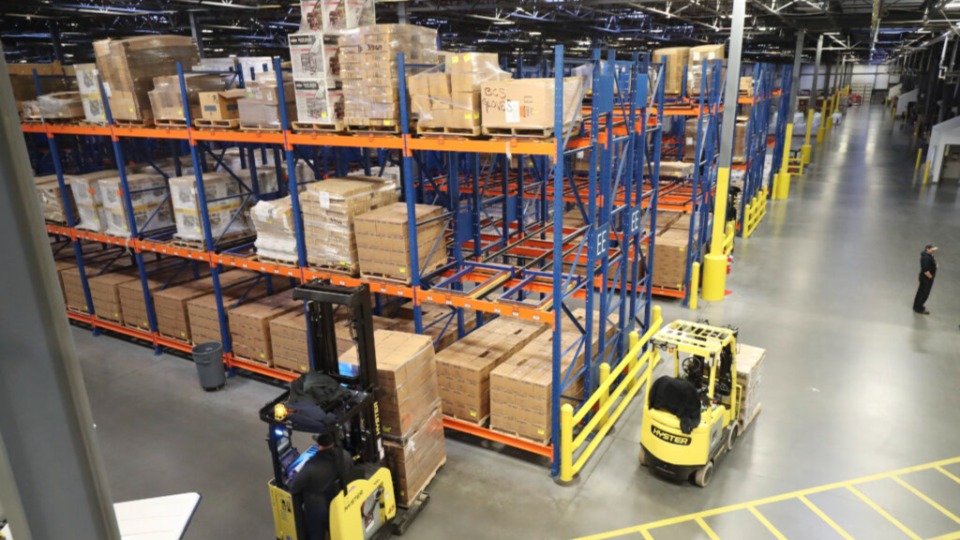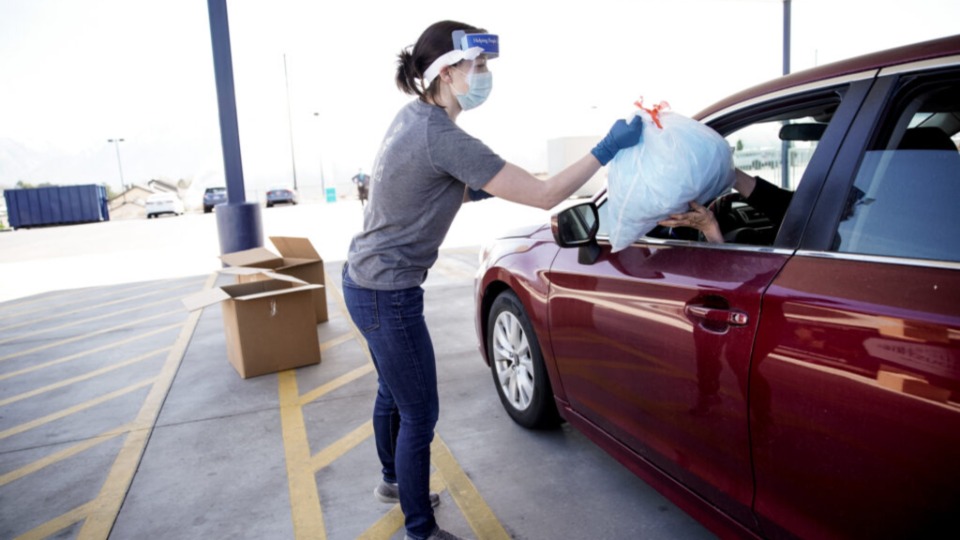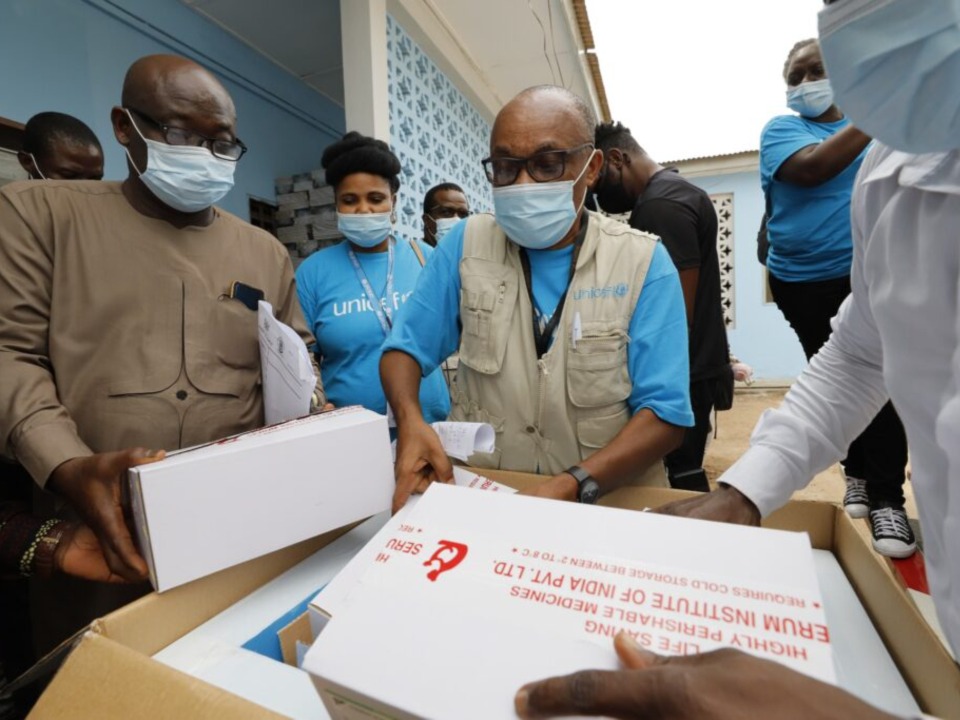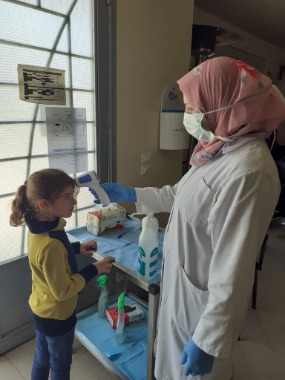
This story appears here courtesy of TheChurchNews.com. It is not for use by other media.
By Scott Taylor, Church News
Responding to the pandemic for the past two years challenged the Church’s humanitarian arm — but that response led to new skill sets and collaborative relationships worldwide.
“I have said many times that COVID-19, I think, was the ultimate pressure test on the Church’s humanitarian efforts,” said Shawn Johnson, the vice president and director of operations for Latter-day Saint Charities.
Johnson likened the pandemic to uncharted waters — akin to a disaster happening at the same time in every country around the world. But it accelerated learning at Latter-day Saint Charities.
“It required us to learn quickly and adapt our strategy, and I think probably changed the face of the way the Church is going to do humanitarian work going forward — probably forever — from some of the things we learned from COVID-19,” Johnson said.
Responding to a Disaster
The Church’s first public response to the respiratory illness coronavirus was in January 2020, when President Russell M. Nelson, president of the Church, announced a large shipment of protective gear to China. This was in partnership with the charitable organization HOPE (Health Oriented Preventive Education).
As coronavirus spread around the world, the Church and its humanitarian arm were quickly mobilizing to address new needs. By April 14, 2020, Church leaders had approved more than 110 relief projects in 57 countries. They invited Church members to participate in these and other relief projects in their communities.
By the end of April 2020, the Church had initiated 280 relief projects in 80 countries, and Church members in Utah sewed nearly 6 million masks for Project Protect by June 2020.

“We’re trying to work with governments [and] community leaders and find out what they need and then respond,” Sister Sharon Eubank said at the time. She is the president of Latter-day Saint Charities and a member of the Relief Society General Presidency.
“Latter-day Saint Charities is very lucky because we have partnerships, whether it’s a pandemic or not,” Sister Eubank added. “We’ve had trusted relationships over time. So when there is a pandemic, we don’t have to start from scratch. We know exactly how to help each other.”
Johnson expounded upon that in an interview this month with the Church News. Johnson said with those relief projects around the world, Latter-day Saint Charities really started to localize humanitarian efforts, by engaging local Church leadership to speak with local medical systems and local governments. They focused on finding the greatest needs and how they could have a unique or distinctive impact and fill gaps.
“That was kind of our strategy to work locally,” he said. “And then from a global perspective, to really focus on how we could strengthen health care systems. And then, in addition to all the other work we do, how do we make sure we don’t lose so much ground in the ongoing humanitarian work that we do so that we can’t recover.”
The Second Disaster
Johnson said the second disaster is the unintended disaster after the disaster.
“You have the pandemic, which is first and foremost on people’s minds, and everyone is trying to do everything else they can,” he said. “But famine and poverty and hunger and immunization needs don’t stop.”
In fact, those problems became exacerbated. Children were out of school and stopped receiving that source of food and education. In addition, health systems used to distribute basic immunizations around the world became depleted.
“Any issue has been made worse through the pandemic,” Johnson said. “And at some point in time, we will get a feel for the lay of the land, and we will probably find that these long-term development issues that were such a focus, we probably, unfortunately, have lost ground in.”
As charitable and nonprofit organizations shift from responding to the pandemic, they will try to make up that lost ground. Johnson said that’s where the Church can be an asset, with clear, simple strategies to meet those needs effectively — and then making sure to evaluate or measure how they are doing over time.

Meeting Needs Locally and Globally
The Church worked to meet hunger and immunization needs in several ways during the pandemic. Throughout 2020, The Church of Jesus Christ of Latter-day Saints donated 32 million pounds of pasta, flour and other goods to food banks across the country.
In September 2020, Latter-day Saint Charities allocated several million dollars to the World Food Programme to help its global distribution network for food and medical supplies. That same month, more than 105,000 pounds of food went to Southern California food banks.
In February 2021, Church members in Idaho distributed food to Fort Hall Reservation. Latter-day Saint Charities partnered with Convoy of Hope to help fund school feeding programs for children around the world. The Church also sent protective equipment to Botswana and donated $20 million to United Nations International Children’s Emergency Fund to help ensure safe, fast and equitable access to COVID-19 vaccines across the globe.
In May 2021, the Church announced a donation worth $4.15 million in a partnership with fellow humanitarian organizations to help send COVID-19 relief to India. And the Church sent cold chain equipment to Panama in November 2021 to help them preserve COVID-19 vaccines.
“With the pandemic, we’ve found that the way our organization is structured is an advantage,” Johnson said. “Having a local presence and continuing to move things forward when other organizations struggled was something that was a real blessing.”
Faith Moving Forward
Latter-day Saint Charities and the Church are focusing on meeting temporal needs during the pandemic and also working with the knowledge that it is essential to prepare the way for the Second Coming of the Lord, when there will be no poor among us, Johnson said.
“The Church of Jesus Christ of Latter-day Saints is uniquely commissioned to be able to do that work,” he said. “There’s no question we have a unique role to play in helping to bless the lives of others. It’s a part of who we are. Whenever you have this foundation of love, love of God and love of others, you really have the environment for the spirit to help you come up with creative ways and solutions and processes to bless the lives of his children because He loves his children.”

The Church works with people and groups from all different backgrounds in humanitarian efforts and tries to find common ground in loving and caring for others, said Johnson. And while people are always interested in the needs of others in developing parts of the world, needs exist in their own communities and their own neighborhoods, he added
“There really is power in collaboration and working together and finding ways to augment each other’s strengths and weaknesses and be able to fill those gaps with one another and go together to bless the lives of others.”
Johnson said the world is full of challenges, and more are still ahead. Latter-day Saint Charities works to address problems on a large scale, but it always comes down to the individual.
“If we can address these issues and remember there is a child of God behind these issues,” he said, “then I think we will continue to see heavenly guidance in the way we approach things.”
Copyright 2021 Deseret News Publishing Company